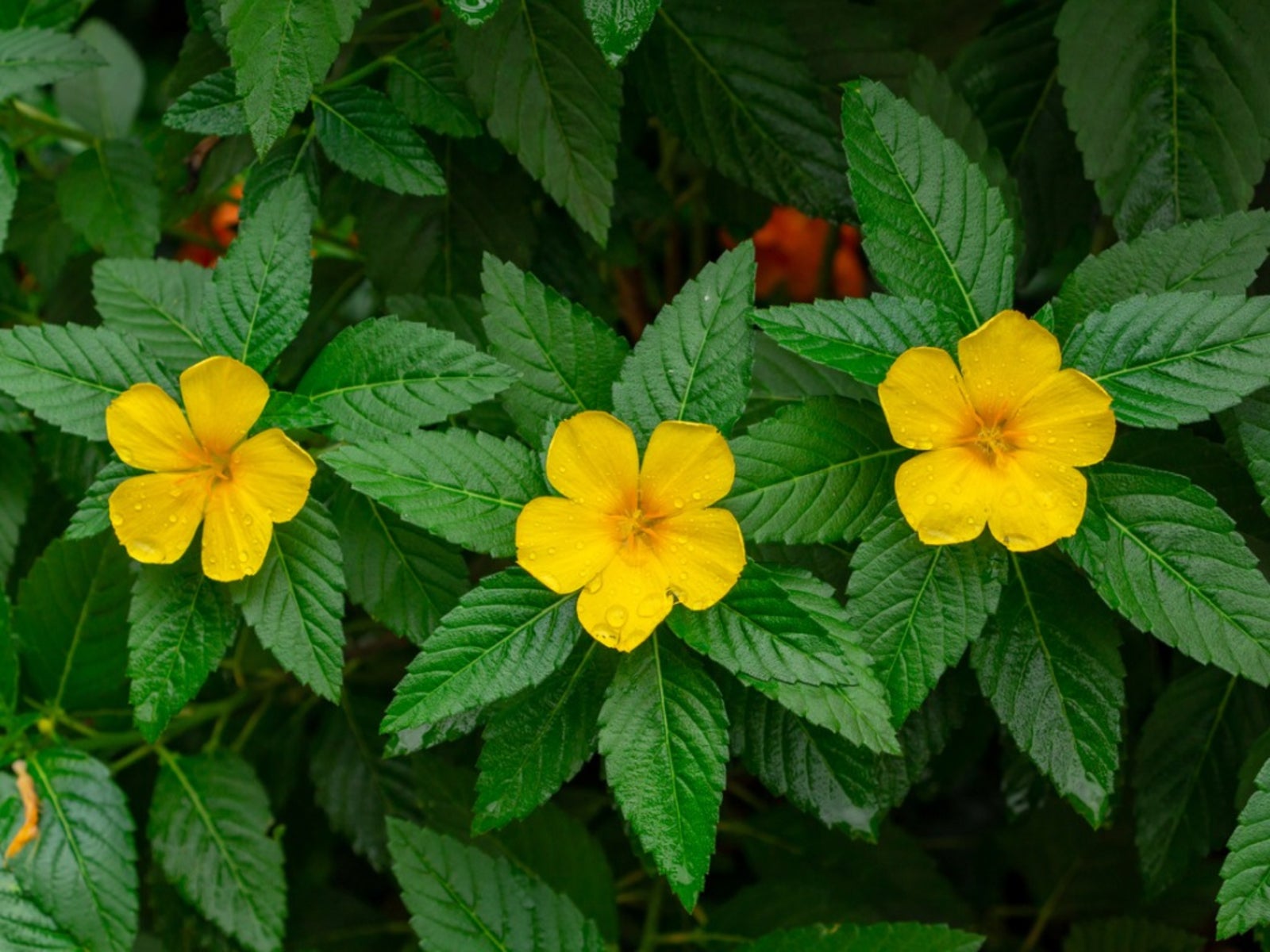Buttercup Bush Info: Learn About Growing Turnera Buttercup Bushes


Yellow, five petaled, buttercup-like flowers bloom prolifically on the buttercup bush, also commonly called Cuban buttercup or yellow alder. Growing buttercup bushes provides continued blossoms in USDA gardening zones 9 through 11. Botanically called Turnera ulmifolia, this spreading groundcover or small shrub brightens up bare spots in the landscape with flowers that bloom in the mornings and last most of the day.
Turnera Buttercup Bushes
Native to the Caribbean, the Cuban buttercup is the official flower of Cienfuegos, Cuba. The buttercup bush is one of the plants to first appear on sandy beaches after they've been ravaged by hurricanes. It is a perennial and reseeds readily. The rewards of growing buttercup bushes are not only the abundant flowers, but the attractive, oval shaped, serrated evergreen foliage, which is fragrant. The Cuban buttercup attracts butterflies as well and is at home spreading between taller plants in the butterfly garden.
Growing Buttercup Bushes
Propagate Turnera buttercup bushes from cuttings, if necessary, although you may find them unexpectedly sprouting in your sandy landscape. Turnera buttercup bushes are prolific growers and prolific sprouters, and are actually considered invasive on the island of Hawaii. Botanists in the Florida Keys also tend to keep an eye on the Cuban buttercup to make sure it does not take over the island. Moderately fast-growing buttercup bushes reach 2 to 3 feet (61-91 cm.) in height and the same in spread to brighten up areas of the flower bed or natural area. The Cuban buttercup flowers best in a full sun location, but also provides the perky yellow flowers in a lightly shaded area. Turnera buttercup care is not complicated but may be time-consuming as the plant can attract whiteflies, aphids, and scale. Turnera buttercup care includes battling these pests and pruning the shrub to keep the plant within bounds. Now that you've learned the pros and cons of growing buttercup bushes, you can grow them if they sprout in your landscape, propagate them, or remove young sprouts to eliminate the possibility of invasion.
Gardening tips, videos, info and more delivered right to your inbox!
Sign up for the Gardening Know How newsletter today and receive a free copy of our e-book "How to Grow Delicious Tomatoes".

Becca Badgett was a regular contributor to Gardening Know How for ten years. Co-author of the book How to Grow an EMERGENCY Garden, Becca specializes in succulent and cactus gardening.
-
 Terrifically Tubular Flowers For Hummingbirds: 9 Tube-Flowered Plants To Attract Hummers
Terrifically Tubular Flowers For Hummingbirds: 9 Tube-Flowered Plants To Attract HummersGrowing tubular flowers for hummingbirds helps you create the optimum feeding conditions for your winged friends. Here are nine tubed delights for hummers
By Tonya Barnett
-
 How To Grow Hydroponic Tomatoes For Fresh Indoor Harvests – No Soil Required
How To Grow Hydroponic Tomatoes For Fresh Indoor Harvests – No Soil RequiredLearning how to grow tomatoes in water is easy and allows you to harvest fresh-home-grown produce in every season without any mess.
By Ellen Wells